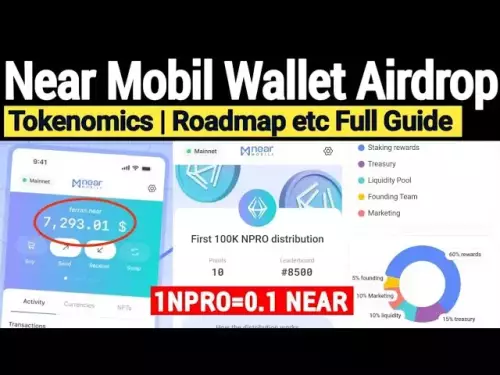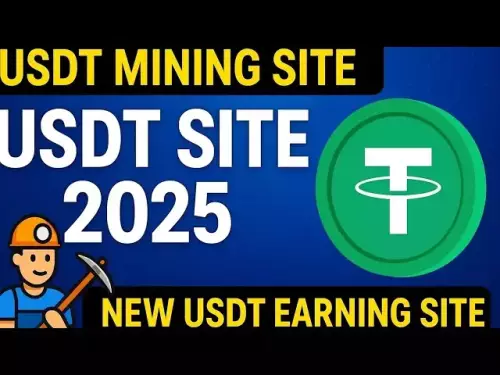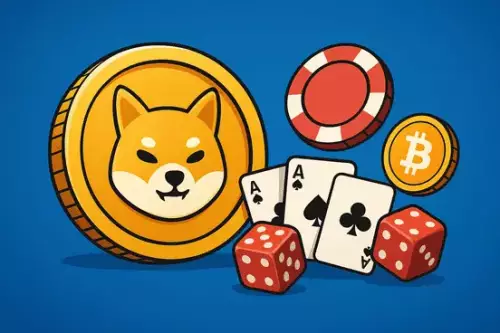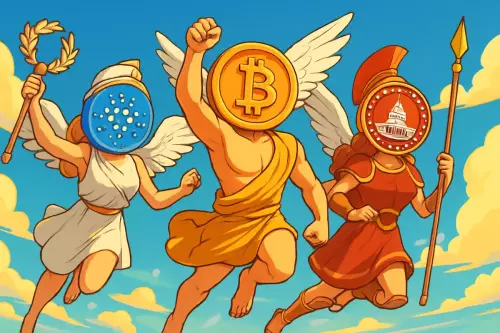 |
|
 |
|
 |
|
 |
|
 |
|
 |
|
 |
|
 |
|
 |
|
 |
|
 |
|
 |
|
 |
|
 |
|
 |
|
Cryptocurrency News Articles
Native Tokens, Blockchain, and Crypto: What's the Deal in 2025?
Aug 23, 2025 at 03:54 pm
Exploring the crucial role of native tokens in blockchain ecosystems, recent developments like Cardano's Midnight, and the looming threat of quantum computing.

Native tokens are the backbone of blockchain, fueling transactions, security, and governance. In the ever-evolving world of crypto, understanding their role is key. Let's dive into what's been happening with native tokens, blockchains, and cryptocurrencies, focusing on the latest buzz and trends.
Native Tokens: The Heart of the Blockchain
In the cryptocurrency ecosystem, a native token is the primary digital asset powering a blockchain. Think of it as the fuel that keeps the engine running. Unlike other tokens created on top of existing networks (non-native tokens), native tokens are embedded directly into a blockchain’s architecture. Bitcoin (BTC) for the Bitcoin network and Ether (ETH) for Ethereum are prime examples. They're not just added later; they're integral to the blockchain's design from day one.
Native vs. Non-Native: What's the Difference?
It's crucial to distinguish between native and non-native tokens. Native tokens, like ETH on Ethereum, are built directly into the blockchain's protocol. Non-native tokens, such as Uniswap's UNI, are created using smart contracts on an existing blockchain. UNI relies on Ethereum's infrastructure and uses ETH to process transactions.
While native tokens secure and power the underlying blockchain, non-native tokens expand its use cases by enabling applications like DeFi, stablecoins, and governance systems.
Key Functions of Native Tokens
- Transaction Fees: Native tokens pay for network activity. ETH pays gas fees on Ethereum, and SOL handles transaction fees on Solana.
- Consensus Participation: Many blockchains use native tokens for staking, mining, or validator rewards.
- Incentives and Rewards: Validators and miners are compensated in the native token, incentivizing them to maintain the blockchain’s security.
- Governance: Some blockchains use native tokens as governance tools, allowing holders to vote on protocol upgrades and policy changes.
- Economic Backbone: Native tokens serve as the unit of account for dApps and smart contracts.
Cardano's Midnight: A Game Changer?
Charles Hoskinson, CEO and founder of Input Output, believes that Midnight will be instrumental in propelling Cardano to the next level. Midnight will launch on the Cardano network. At launch, Hoskinson expects Midnight’s utility token, NIGHT, to become the largest, most traded, and highest volume Cardano native token (CNT). With its distribution model allocating 100% of its supply to users of eight blockchain ecosystems, NIGHT aims to attract adoption beyond the Cardano community.
As of August 6, 2025, Hoskinson disclosed that 23,182 wallets have claimed 470 million NIGHT tokens since the Glacier Drop portal opened on August 5.
The Quantum Threat: A Looming Challenge
The blockchain industry faces a pivotal challenge: quantum computing. As quantum computers advance, they threaten to render traditional cryptographic systems obsolete. Quantum computers can crack RSA and ECC—the bedrock of blockchain security—in minutes. Projects that embed PQC into their core architecture today will define the security landscape of tomorrow.
Early-Stage Protocols Leading the Charge
- MatRiCT (Monero's Quantum-Resistant Evolution): Extends Monero's RingCT to conceal transaction amounts against quantum attacks.
- Li et al.'s Bonsai Tree Wallets: Lightweight quantum-resistant solutions ideal for IoT and resource-constrained environments.
- R3's BPQS and Corda's Hybrid Approach: Combines hash-based cryptography with a fallback mechanism for permissioned blockchains.
- LACChain's NIST-Compliant Integration: Deploys NIST-standardized algorithms to secure digital signatures and key exchanges.
Investment Strategies: Native vs. Non-Native
When investing, native tokens (like BTC, ETH, SOL) generally offer more stability due to their essential role in blockchain operations. Non-native tokens (like UNI, AAVE, CAKE) can provide higher returns but carry more risk, depending on the success of their underlying projects. A balanced portfolio often includes both: native tokens as a foundation and select non-native tokens for growth exposure.
Pi Network: Recent Activity and Price Movements
The Pi Network has seen unusually large on-chain activity, with six major transactions totaling 550 million π occurring between August 22 and August 23, 2025. While the Pi Network demonstrates active participation from its foundation and community, investors should keep an eye on updates from the Pi Foundation and follow technical signals before making any moves.
Final Thoughts
Native tokens are the unsung heroes of the blockchain world, providing the essential fuel for decentralized networks. With exciting developments like Cardano's Midnight and looming threats like quantum computing, staying informed is key. So, whether you're a seasoned investor or just dipping your toes into crypto, understanding native tokens is your ticket to navigating this ever-evolving landscape. Now, go forth and conquer the crypto world – you've got this!
Disclaimer:info@kdj.com
The information provided is not trading advice. kdj.com does not assume any responsibility for any investments made based on the information provided in this article. Cryptocurrencies are highly volatile and it is highly recommended that you invest with caution after thorough research!
If you believe that the content used on this website infringes your copyright, please contact us immediately (info@kdj.com) and we will delete it promptly.






























































